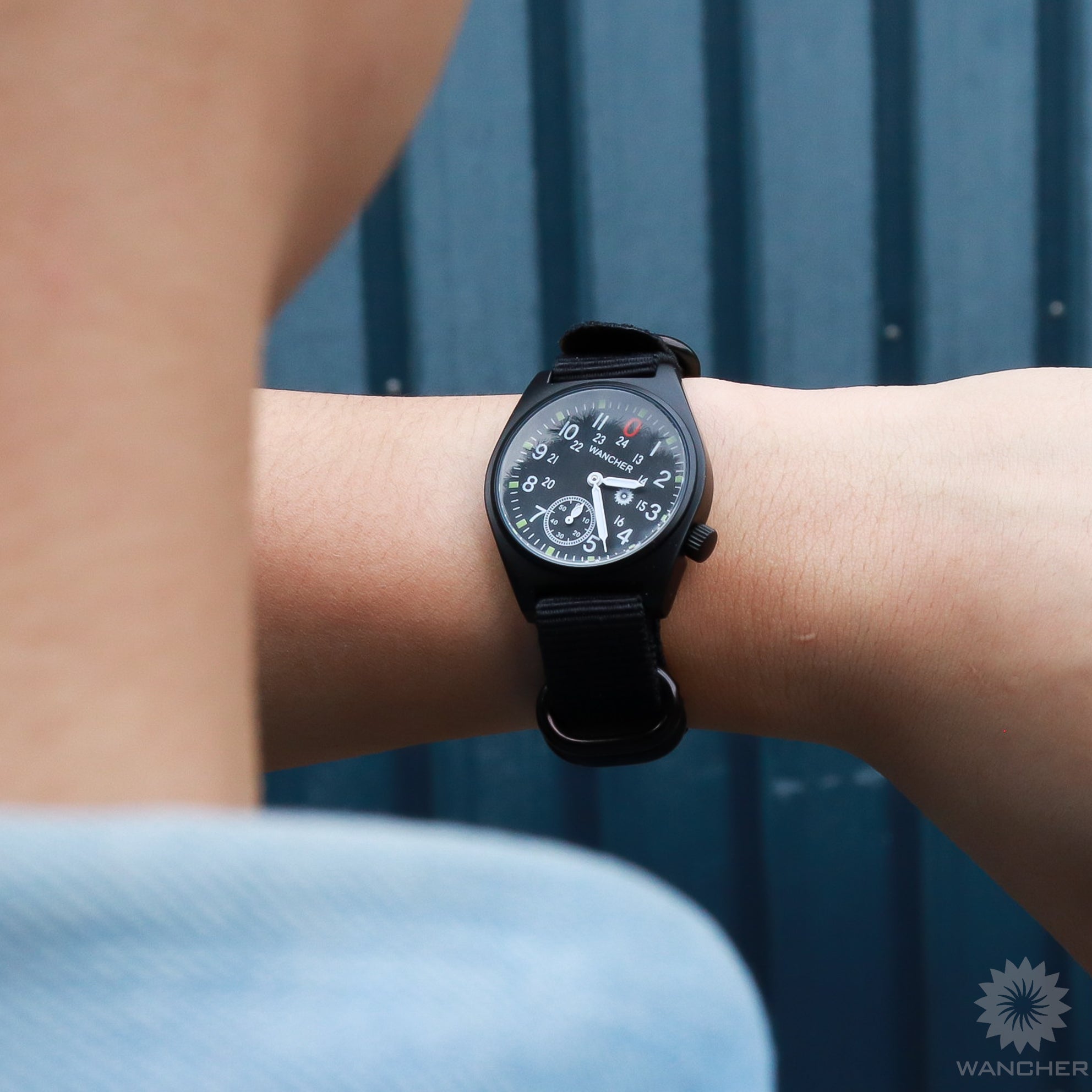Wristwatches have evolved in numerous ways to enhance functionality, ergonomics, and readability. Among these innovations, the 45-degree tilted dial watch stands out as a unique and practical design. Whether for professional racing, aviation, or outdoor adventures, these watches have carved a niche for themselves. In this comprehensive guide, we’ll explore their history, usefulness, and why they are particularly well-suited for hiking and adventure enthusiasts.
The History of 45-Degree Tilted Dial Watches

Origins and Evolution of the 45-Degree Tilted Dial Design
The concept of the 45-degree tilted dial dates back to the early 20th century when ergonomics and functionality became primary concerns for specific professions. The idea was to make time-reading more natural without the wearer needing to twist their wrist excessively.
Significant Milestones and Influential Watch Models
One of the earliest adopters of this design was the driver’s watch. In motorsports, traditional watch dials posed a challenge for drivers who needed to check the time without taking their hands off the wheel. Brands such as Vacheron Constantin and Gruen introduced watches with angled dials to offer better readability while driving.
Motorcycle and aviation professionals also found this design beneficial. Later, tool watches, particularly those tailored for military personnel and extreme sports enthusiasts, adopted similar tilting mechanisms to improve usability in high-movement environments.

Reasons Behind the Development and Popularity
The popularity of the 45-degree tilted dial stems from its ability to enhance functionality in specific scenarios. While it is not a conventional feature for everyday timepieces, it serves specialized needs, making it a favorite among professionals and adventure-seekers.
Watches Throughout History with a 45 Degree Tilted Dial
Vacheron Constantin 1921

Longines Avigation A-7

Usefulness of 45-Degree Tilted Dial Watches
Improved Readability and Visibility
One of the most significant advantages of this design is improved readability. By tilting the dial, users can glance at the time without adjusting their wrist position, which is especially useful in high-intensity situations like driving, climbing, or hiking.
Ergonomic Benefits
The ergonomic advantages of a tilted dial go beyond just visibility. For individuals engaged in activities requiring continuous hand movement—such as pilots, motorcyclists, and outdoor adventurers—the natural alignment of the tilted dial reduces wrist strain and ensures effortless time-checking.
Practical Applications
-
Driving and Motorcycling: Reduces the need to twist the wrist excessively.
-
Piloting and Aviation: Enhances situational awareness by providing a quick time reference without disrupting hand positions.
-
Outdoor Adventures and Hiking: Ensures effortless time-checking while using hiking poles, climbing gear, or carrying backpacks.
Suitability for Everyday Adventure Hiking
How the 45-Degree Tilted Dial Enhances Outdoor Activities
Hikers, trekkers, and adventurers require a reliable watch that can be read at a glance in various lighting conditions and while in motion. The 45-degree tilted dial design facilitates this by aligning naturally with the wrist position used when gripping trekking poles, climbing ropes, or navigating rugged terrain.
Conclusion
The 45-degree tilted dial watch is more than just an aesthetic novelty—it is a functional and ergonomically refined tool for specific activities. Whether for driving, piloting, or hiking, this design significantly enhances time readability and usability. For adventure seekers, especially hikers, a well-built, tilted dial watch can offer convenience, durability, and efficiency in the great outdoors.
If you're looking for a watch that blends innovation with practicality, a 45-degree tilted dial timepiece might be the perfect companion for your next adventure.



